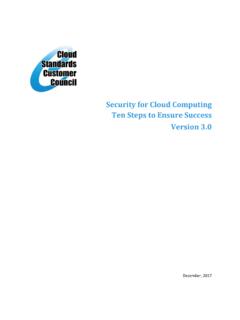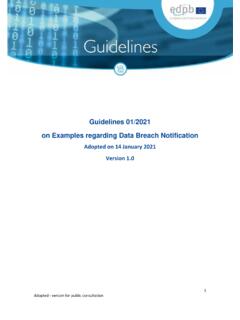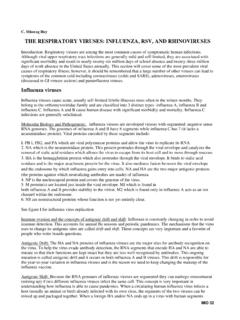Transcription of The Beginner's Guide to Fleet Management - Encore …
1 The beginner s Guide to Fleet Management Page 2 The beginner s Guide to Fleet Management Fleet Management : DEFINED In today s modern world, fleets can come in many different shapes and sizes. Technically speaking, both a large, nationally-operating trucking company and a small, locally-operating delivery company are considered fleets. So, if you fall into either of these categories or anywhere in between, you ve got a Fleet to run. Regardless of the size and operating procedures of your Fleet , you need a comprehensive Fleet Management program to keep your Fleet running as efficiently as possible.
2 At its core, Fleet Management covers the practices of overseeing, organizing, and recording all aspects of a company s Fleet . These managerial duties might include, but aren t limited to, establishing regular vehicle maintenance schedules, establishing cost-saving measures, and implementing new driver training programs. Depending your company s size and the industry in which you operate, how large and varied your Fleet is, Fleet Management practices vary more as the aspect of Management grows more specific.
3 Whether you wear many hats and only one of your duties is Fleet Management , or whether Fleet manager is in your job title, this beginner s Guide will walk you through the basics of Fleet Management and how to build your own company s successful Fleet Management program (FMP) from the ground up. Primary Responsibilities You have a lot of primary responsibilities to keep in mind when establishing your company s Fleet Management program. These requirements will inform your decisions every step of the way, from training drivers to acquiring vehicles.
4 Recording and maintaining accurate data and information on all aspects of the Fleet . Example: Fleet managers are often responsible for keeping detailed maintenance histories for all vehicles in the Fleet . They should be able to find the exact date of a specific truck s last oil change by looking through well-kept records. Assessing, managing, and mitigating all associated risks at every level of your organization. Example: Fleet Management programs should include advanced screening policies for all drivers, as well as rigorously enforced safe-driving policies and training programs, to lower the risk of traffic incidents involving its Fleet vehicles.
5 Page 3 The beginner s Guide to Fleet Management Analyzing recorded data, extrapolating issues from the data, and recommending solutions. Example: Fleet managers should be able to view common routes that their vehicles take and identify alternate routes or travel schedules for decreasing idle times and avoiding heavy traffic patterns. Establishing situational processes and procedures for a variety of scenarios and circumstances that the Fleet may encounter. Example: A good Fleet Management program has a detailed plan of action for situations involving on-road incidents, such as vehicle breakdowns, failed inspections, or traffic crashes.
6 Benefits of Fleet Management A successful Fleet Management program boosts your company s well-being with: Lowered costs, greater returns by limiting inefficient business practices such as excessive idling or out-of-the-way travel routes, Fleet managers can reduce fuel consumption and increase productivity. Increased overall business efficiency the positive results from having a well-run Fleet can overflow into other areas of the company as well. Customers receiving their goods and services in a timely manner are likely to become repeat customers.
7 Regular vehicle maintenance can lead to reduced instances of costly vehicle breakdowns that cut into the company s overall annual budget. Improved employee happiness an impartial structure and established company policies applied fairly and accurately across all levels of employment leads to increased employee satisfaction with the company and with their own jobs. Strengthened corporate peace-of-mind a good Fleet Management program reassures c-suite individuals and decision-making boards that the company is maximizing its successes and minimizing its risks.
8 Essentially, it boils down to this: if your business needs multiple vehicles to properly function, you need some form of Fleet Management to ensure that your Fleet is operating safely and to its greatest potential. DIFFERENT TYPES OF FLEETS As mentioned earlier, there are many different kinds of fleets, and the type of Fleet that your company has will play a big part in determining how you proceed with the establishment of your Fleet Management program. Page 4 The beginner s Guide to Fleet Management Small Businesses The Small Business Association (SBA) defines a small business in the transportation industry as one that does $ million or less in average annual receipts (for truck transportation) or $15 million or less in average annual receipts (for transit and ground passenger transportation).
9 1 Examples of small business fleets include: Florist and gift delivery businesses Catering and food delivery companies Cleaning service companies Electrician/plumbing/HVAC companies Landscaping businesses Large Businesses Another metric that is often used to differentiate between small and large businesses is employment figures: businesses with more than 500 employees are typically considered large While there is technically no single agreed-upon threshold for the number of vehicles a Fleet requires to be categorized as large, bigger Fleet businesses tend to have at least 200 vehicles or more.
10 Examples of large business fleets include: Rental car/truck companies Moving companies Taxi companies Delivery companies Long haul semi-truck companies Determining Your Fleet Needs The first step to evaluating your Fleet Management requirements is determining the type of Fleet that your company will need. Consider the following discussion questions when mapping out your FMP. What is your business classification? Does your company fall into the small business category, the large business category, or somewhere in between?


![Trusted Computer System Evaluation Criteria ['Orange Book']](/cache/preview/d/c/8/2/e/0/b/0/thumb-dc82e0b09a20a646b537554d023d91ee.jpg)



